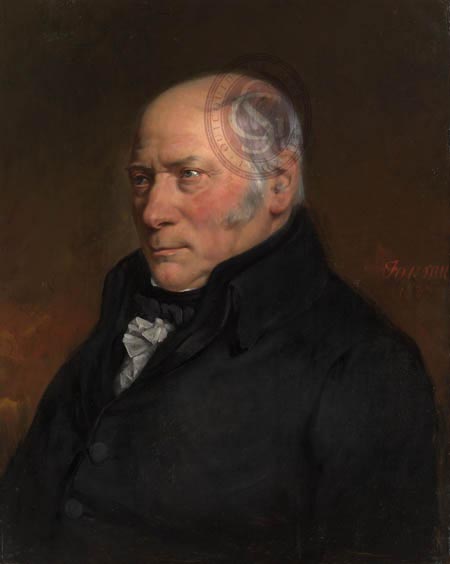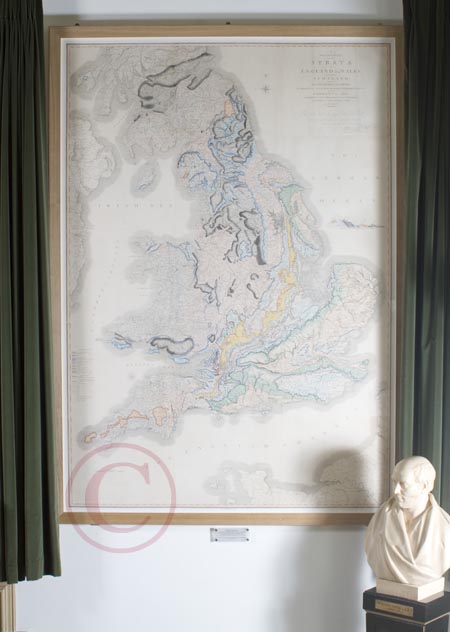Portrait of William Smith (1769-1839)

|
Portrait in oils of William Smith, by Hugues Fourau, 1837. (GSL/POR/15)
Provenance: presented to the Society by William Smith (of Cheltenham), 1880.
|

|
| The Society's copy of the Smith's map, in front of which is a plaster portrait bust of Smith (GSL/POR/28), based on the marble original by Matthew Noble, 1848. Photograph by Alistair Fyfe, 2009. |
The second of two figures from the Society’s major portrait collection who was not a member of the Society. William Smith, the son of an Oxfordshire blacksmith, was the first person to recognise the importance of fossils in identifying strata of equivalent age, thus enabling rocks to be correlated across country. Using his geological knowledge, he made his living as a surveyor and engineer and his work involved him travelling up and down the country, during which he recorded the rocks he saw. The principal result of this first hand observational work, was his map of England and Wales (published in 1815) - the first geological map of a country ever made.
Despite this achievement, Smith was never a Fellow of the Society, probably due to his low social and economic status. ‘Strata Smith’ or ‘The Father of English Geology’ was, however, the recipient of the first Wollaston Medal in 1831 – still the Society’s highest award.